The Korean War began on June 25, 1950 and ended on July 27, 1953. As with other twentieth century wars, American Indian men did not hesitate to enlist. Many men came from Native cultures which had traditionally emphasized a warrior tradition. For many young men the Korean War provided them with the opportunity to count coup and obtain traditional war honors.
While the United States military was racially segregated during World War II and American Indians were often classified as “colored,” racial segregation had ended by the Korean War. However, the military did not keep records showing the number of American Indians who served in the war. It is generally estimated that about 10,000 Indians served in the war.
In Montana in 1950, David Deafy (Cheyenne) was concerned that the Korean War was raging and that the nation needed prayers. He led 13 Cheyennes on a pilgrimage to the Sacred Mountain (Bear Butte). They fasted for two days, offering their pipes to Maheo and the Sacred Persons twice each day: once in the morning and once in the evening.
A year later, four Cheyenne men—Albert Tall Bull, Bert Two Moon, Charles White Dirt, Willis Medicine Bull—vowed to fast at Bear Butte for peace. Whistling Elk instructed the fasters. After listening to the fasters’ visions, Whistling Elk interpreted them to mean that the Korean War would end within four months. The war, however, continued for two more years.
With the Korean War as an excuse, the American government continued to appropriate American Indian land and resources. In 1951, a Yakama tribal delegation—Thomas Yallup, Alex Saluskin, Gealge Seelatsee, and Watson Totus—travelled to Washington, D.C. to testify before a Congressional committee about the importance of Celilo Falls on the Columbia River and the impact which the proposed The Dalles Dam would have on their people. When Thomas Yallup testified that Celilo Falls are sacred, he was asked why some other river wouldn’t work as well. Yallup replies:
“The Christian people of the States of Oregon and Washington have recognized our holding the [salmon] ceremony for each year, and throughout the country I believe that the other religions, including the Christian religion, have also backed us up in asking the Government not to take a sacred place, a place that is held sacred by the Indians”
The Commissioner of Indian Affairs indicated that the Bureau of Indian Affairs would not oppose the Construction of The Dalles dam because of the urgent national defense need for power brought on by the Korean War and the Cold War.
Anti-Indian racism continued in spite of the contributions made by American Indians in the Korean War. In 1951, the managers of a Sioux City, Iowa cemetery refused to bury the body of Sergeant John Raymond Rice, a Winnebago who had been killed in action in Korea. In response to this racial segregation, President Harry Truman arranged to have the eleven-year army veteran buried in Arlington National Cemetery.
Some of the Korean War Indian veterans went on to serve their country in other ways. Ben Nighthorse Campbell, a Northern Cheyenne, was a Korean War veteran who went on to become a U.S. Senator from Colorado.
Veterans Memorial Museum
The Veterans Memorial Museum in Chehalis, Washington has some displays on Korean War era American Indian Veterans.
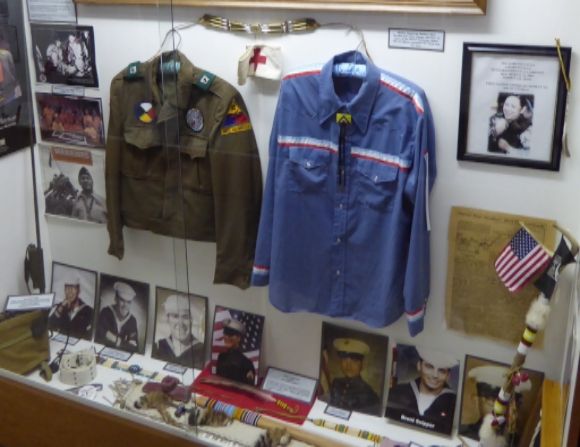
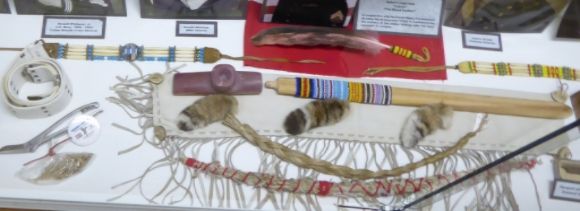
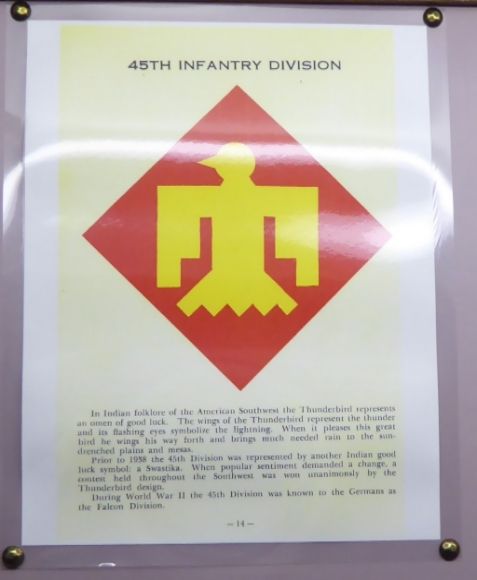
 In the ribbon shirt shown above, the blue and white ribbons represent the colors of the Korean Campaign ribbon and the red ribbon represents the blood that was shed.
In the ribbon shirt shown above, the blue and white ribbons represent the colors of the Korean Campaign ribbon and the red ribbon represents the blood that was shed.
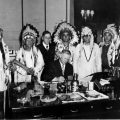
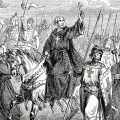
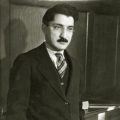
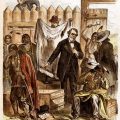
Leave a Reply